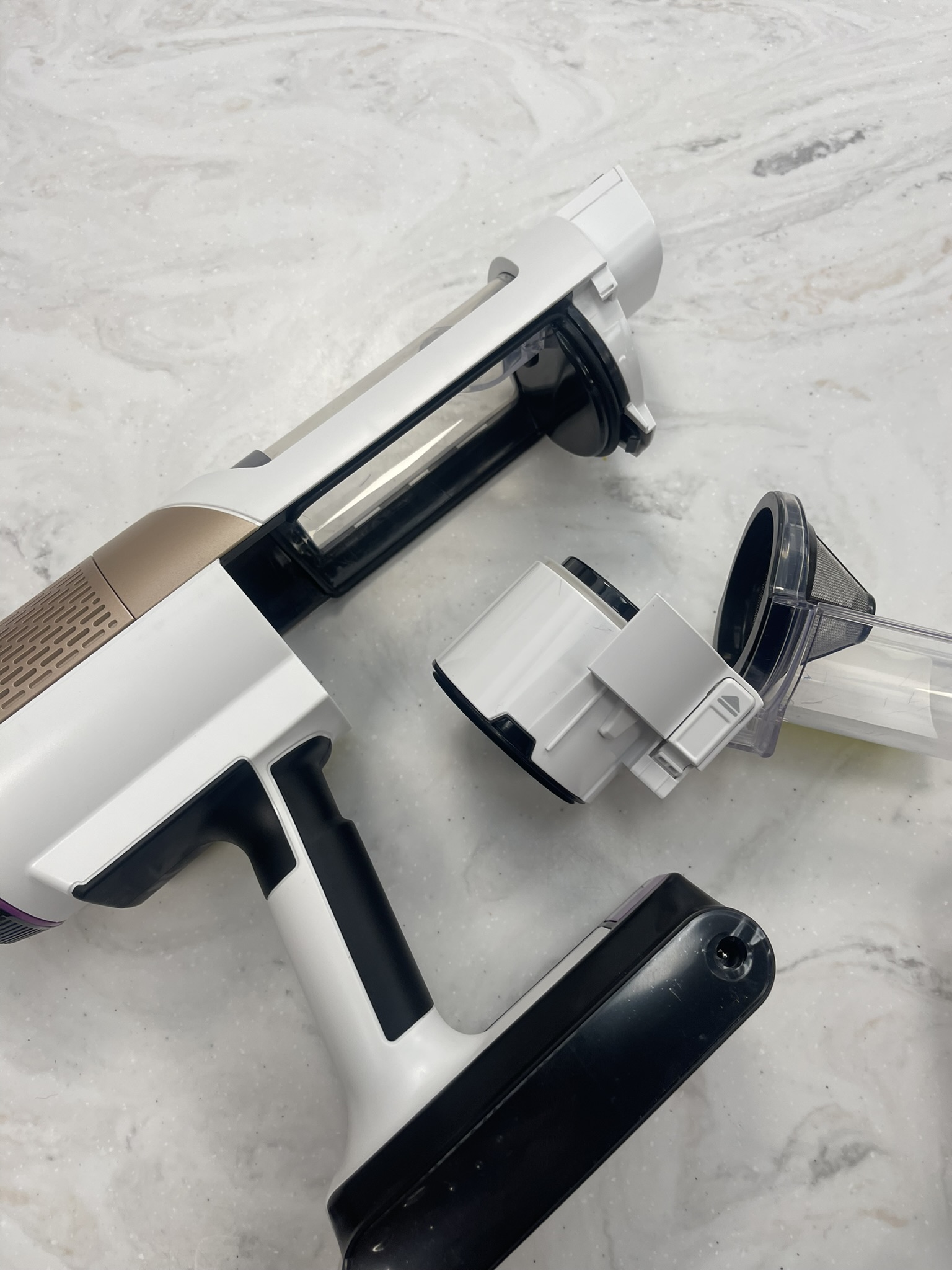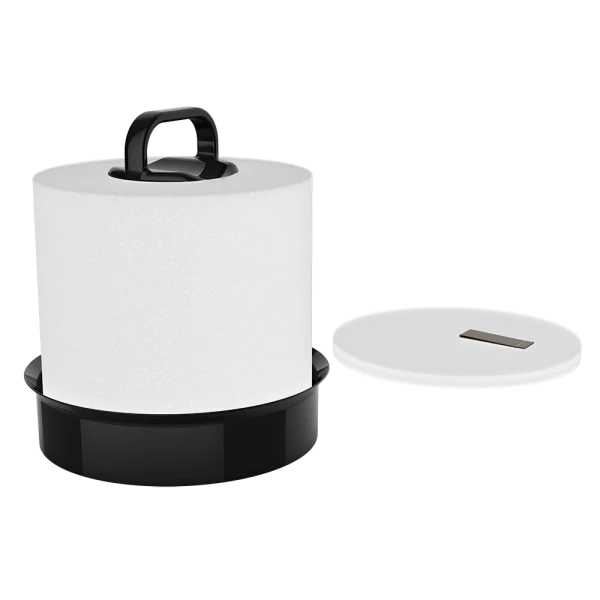
Shark is one of our favorite vacuum brands here at Homes & Gardens. But even the most capable appliances need looking after to avoid issues from arising too early.
After spending 200+ hours testing vacuums and even more hours researching and writing about them, I always urge consumers to look after theirs as best as they possibly can, ensuring they last for as long as possible. Not only is it better for the planet, it's also more financially savvy.
So, if you own one of the best Shark vacuums, these are the common culprits that vacuum engineers are always fixing, and the simple steps you can take to prevent them.
The most common faults that engineers fix in Shark vacuums
I got in touch with Darren Emmott who leads Vacuum Doctor, the specialist team of engineers servicing all sorts of vacuums – including the Shark range that we love here at Homes & Gardens. He went into detail on the common fixes his team carry out and what we, as consumers, can do to prevent them.
1. Loss of suction

If your Shark vacuum has a removable dust cup, it's worth giving it a clean.
Most often, loss of suction is the result of a blockage. 'It's just a matter of tracing and finding where the blockage is,' Darren explains, as it could be in the hose, the wand or even the floorhead.
'Debris stuck in the hose can be removed with a long object like a broom handle, but be gentle to avoid damaging it,' Darren continues. We've also used a nifty quarter hack to find vacuum blockages in canister vacuums, and this will work if your Shark is an upright vacuum, but not a cordless one like the Shark Cordless PowerDetect.
People also forget to empty the dust cup as often as they should, causing the vacuum to lose suction power. I always empty mine after each use, which also prevents the dirt and grime from wearing down the internal parts.
Design expertise in your inbox – from inspiring decorating ideas and beautiful celebrity homes to practical gardening advice and shopping round-ups.
'It’s also good practice to wash it using warm soapy water, ensuring it's thoroughly dried before reassembling,' Darren adds. This is only possible for Shark vacuums with removable dust cups, as those that have them built-in should avoid becoming wet at all costs.
2. Poor filter maintenance
As somebody who writes about vacuums everyday, poor filter maintenance is a common issue across all vacuum cleaners. As the filter traps debris while letting air pass, not cleaning your vacuum filter regularly will result in a lack of airflow through the appliance. This can then cause poor suction, put pressure on the motor, and even overheat the machine.
'Foam and felt filters should be cleaned every three months and replaced annually, while HEPA filters need replacing every year,' advises Darren. You can buy replacement filters direct from Shark for as little as $11.99.
Also, when it comes to washable filters, it's actually a smart move to buy a second one, even if it doesn't need replacing yet. It allows you to still use your vacuum while the other is drying, as it can take up to 48 hours for a filter to completely dry (and re-inserting it while wet will seriously damage your appliance).

You can enter your vacuum's model into Shark's parts search. If your vacuum isn't working as well as it once did, chances are you need a new filter.
3. Brushroll not spinning
I'm sure most of us are all-too-familiar with the frustration of hair wrapping around a vacuum's brushroll, even in the best vacuums for pet hair. But aside from the inconvenience of cutting the hair out, this can actually, over time, cause the brushroll to stop spinning.
Darren explains how hair and debris 'binding around the brushroll' can halt its movements. To prevent this, make sure you're periodically removing anything lodged in there, and cutting out any wrapped hair after vacuuming pet hair.
Some Shark vacuums have a brushroll indicator that will let you know when this is the issue. If it's red: clear the blockage, reset the vacuum, and the indicator light should be gone.
4. Vacuum turning off
We've seen something similar when looking at the common faults in Dyson vacuums, where it'll pulse or quickly turn off when you haven't done so yourself. This is usually down to motor strain and overheating, and it's a safety precaution built into the vacuum to avoid further damage to the motor.
When this happens, Darren suggests: 'Unplug the vacuum and let it cool down for about an hour. Check for blockages in the filters or debris-filled brushrolls that might be causing the motor to overwork.'
If you've done these checks and the problem persists, you'll have to take it to a professional.
FAQs
Are there any unavoidable Shark vacuum issues?
Unfortunately, Shark vacuums aren't the easiest to repair. The above issues can be resolved and prevented with simple checks but anything more intricate isn't always as straightforward.
'When it comes to the flex change, cable and plug, for example, the time it takes to repair it isn't worth it,' Darren admits. Shark parts aren't as readily replaceable, and by the time this much money or energy has been sunk into fixing it, you might as well get a new vacuum.
Why is my Shark vacuum so loud?
Your Shark vacuum running louder than usual could be a sign of any of the above issues. Dirty filters, blockages, clogged brushrolls and a strained motor can all contribute to your vacuum working harder than usual, and therefore louder.
If it's time for a vacuum upgrade, consider one of the best Dyson alternatives for tried-and-tested vacuum performance at a reasonable price.

Dan is the Home Tech Editor for Homes & Gardens, covering all things cleaning, sound, smart home, and air treatment across the Solved section.
Having worked for Future PLC since July 2023, Dan was previously the Features Editor for Top Ten Reviews and looked after the wide variety of home and outdoor content across the site, but their writing about homes, gardens, tech and products started back in 2021 on brands like BBC Science Focus, YourHomeStyle and Gardens Illustrated.
They have spent more than 400 hours testing and reviewing vacuums, soundbars and air purifiers for Homes & Gardens.
Dan has a BA in Philosophy and an MA in Magazine Journalism. Outside of work, you'll find them at gigs and art galleries, cycling somewhere scenic, or cooking up something good in the kitchen.
